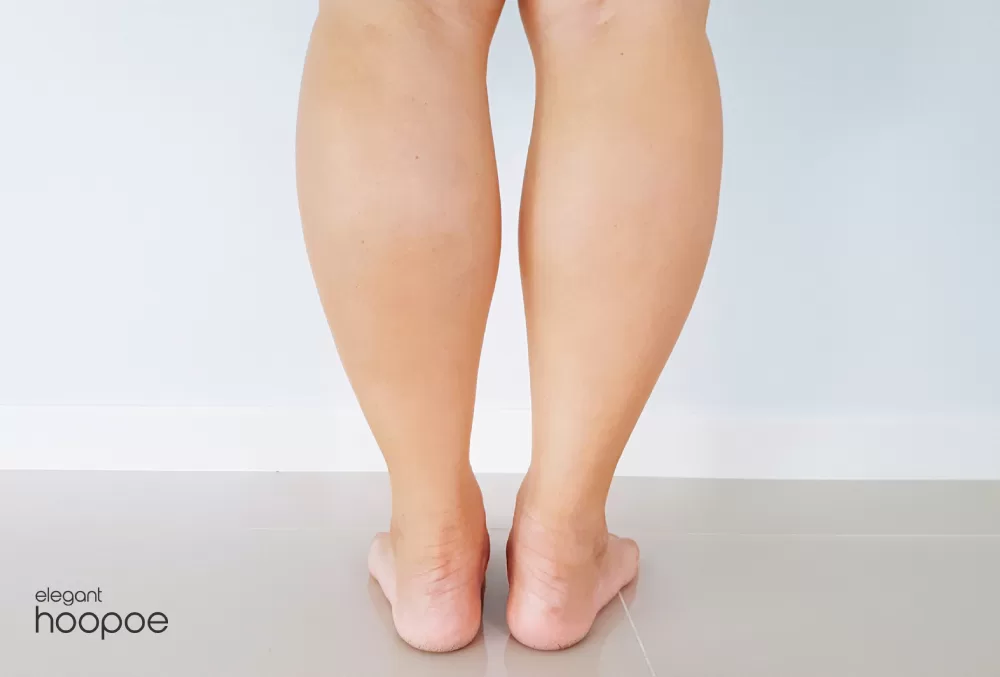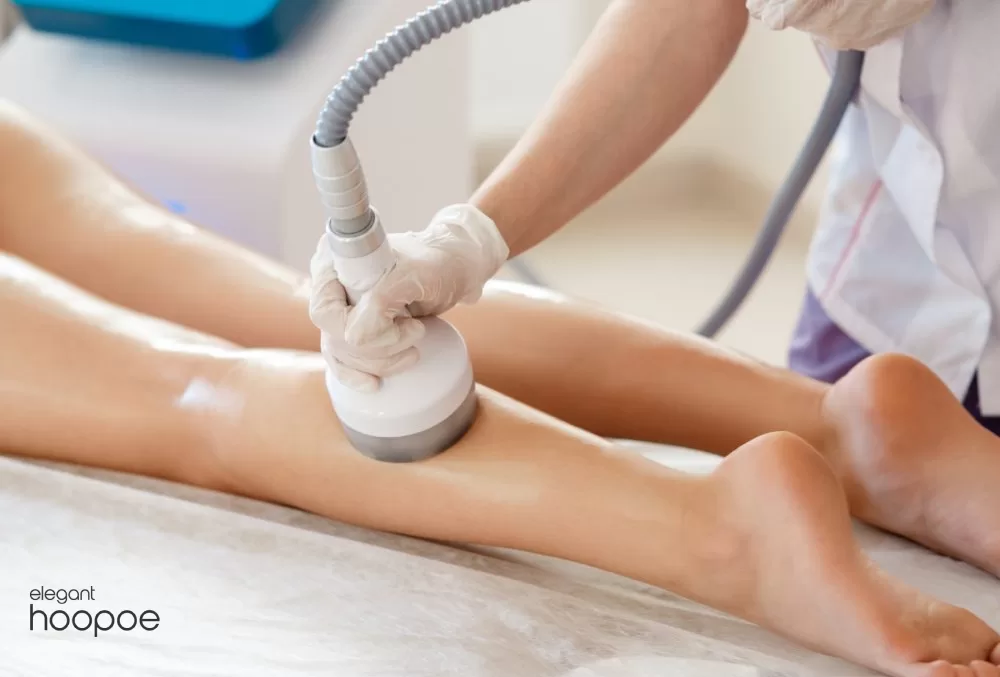How to Lose Calf Fat: Is Surgery the Best Option for Slimmer Legs?
Losing calf fat can be challenging, but both surgical and non-surgical methods can help achieve slimmer legs. Surgical options like liposuction, muscle reduction, and excision remove excess fat for immediate results, while non-invasive treatments like laser lipo, radiofrequency, and cryolipolysis offer gradual fat reduction.
Pre-operative steps include medical evaluation, lifestyle adjustments, and compression garment use. Recovery involves swelling management, rest, and follow-up care. While surgery provides noticeable changes, combining it with a balanced diet and targeted exercises ensures long-term toning and muscle definition.
Do you know how to lose calf fat? Calf fat reduction surgery is a cosmetic procedure designed to remove excess fat from the calf area, resulting in slimmer and more toned-looking calves. The procedure can be performed through different methods, including liposuction, calf implants, and a combination of both.
It is typically done for aesthetic purposes and can be an option for those who have been unable to achieve the desired results through exercise and diet alone. It is typically sought after by individuals unhappy with their calves’ shape or size. Meaning that Calf fat removal surgery is a safe and effective option for those who wish to improve the appearance of their calves and boost their confidence.
In this procedure, the surgeon will use liposuction techniques to remove excess fat from the calves, resulting in a more contoured and defined look.
What is a calf fat reduction surgery?
to the answer of how to lose calf fat? we can say that Calf fat reduction surgery is a cosmetic procedure that involves the removal of excess fat from the calves in order to achieve a more sculpted and toned appearance. Its aim is to remove excess fat from the calves to improve their shape and contour. It is typically performed on individuals who have large or disproportionate calf muscles that do not respond well to diet and exercise.

This procedure for how to lose calf fat is typically sought after by individuals who are unhappy with the shape or size of their calves and have not been able to achieve their desired results through diet and exercise alone.
The procedure involves various techniques, including liposuction, direct excision, and Botox injections, depending on the patient’s individual needs and goals. In this procedure, the surgeon will use liposuction or other techniques to remove excess fat from the calves, resulting in a more contoured and defined look.
about how to lose calf fat, Calf fat removal surgery is a safe and effective option for those who wish to improve the appearance of their calves and boost their confidence. It is generally considered safe and effective, with minimal scarring and a relatively short recovery time.
Related article: Pear Shaped Body
Why Calf Fat Removal Procedure?
Calf fat reduction surgery is typically done for cosmetic reasons to improve the appearance of the lower legs. Some people may feel self-conscious about the size or shape of their calves, or they may feel that their calves are disproportionate to the rest of their body.

Others may have difficulty finding clothing or shoes that fit comfortably. In some cases, calf reduction surgery may also be done for medical reasons, such as to alleviate pain or discomfort caused by an underlying condition. However, this is less common and usually requires a different surgical approach. Some common other reasons for undergoing this surgery to lose calf fat include:
- Excess fat: Some people may have excessive fat deposits in their calves, which can make their lower legs look disproportionate.
- Genetics: In some cases, people may be genetically predisposed to having larger calves, which can be difficult to reduce through diet and exercise.
- Medical conditions: Certain medical conditions such as lipedema can cause excess fat accumulation in the legs, including the calves.
- Body dysmorphia: Some individuals may have a distorted perception of their body image and feel self-conscious about the size of their calves.
Considering body sculpting treatment in Dubai? contact Elegant Hoopoe for a free consulting session.

Pre-operative preparation
Pre-operative preparation is an essential part of any surgical procedure, and calf fat reduction surgery is no exception. Here are some of the common pre-operative preparations for calf fat reduction surgery:
Consultation with a qualified surgeon: The first step in the process is to consult with a qualified and experienced plastic surgeon. The surgeon will examine your calves and assess your overall health to determine if you are a suitable candidate for the procedure to lose calf fat.
Medical evaluation
The surgeon will also perform a thorough medical evaluation to ensure that the patient is in good overall health and does not have any underlying medical conditions that could increase the risk of complications during or after the surgery. The surgeon may order some medical tests, such as blood tests and imaging studies, to ensure that you are healthy enough for surgery.
Physical preparation
Patients may be advised to follow a specific diet or exercise regimen to prepare for the surgery. This may include avoiding alcohol, smoking, and certain medications that can increase the risk of bleeding or other complications.
Compression garments
Patients may be required to wear compression garments before and after the surgery to help reduce swelling and improve healing.
Mental preparation
It is important for patients to have a realistic understanding of what to expect during and after the surgery, as well as a positive attitude and a willingness to follow the surgeon’s instructions for post-operative care.
Medication Review
You will be asked to provide a complete list of any medications you are currently taking, including over-the-counter drugs, vitamins, and herbal supplements. Some medications may need to be adjusted or discontinued before the surgery.
Stop Smoking
If you smoke, you may be asked to stop smoking for a certain period before and after the surgery to reduce the risk of complications.
Adjust Diet
The surgeon may recommend that you follow a specific diet in the weeks leading up to the surgery to ensure that you are getting enough nutrients and maintaining a healthy weight.
Exercise
Depending on your current level of fitness, the surgeon may recommend that you start or increase your exercise routine before the surgery to help with the healing process.
Prepare for Recovery
You will need to arrange for someone to drive you home after the surgery and arrange for help with activities of daily living, such as cooking and cleaning, for a few days after the surgery to lose calf fat. You may also need to take time off work or other activities to ensure a full and smooth recovery.

Different calf fat removal surgeries
There are several techniques for calf fat reduction surgery, some treatments are invasive, while there are also non invasive fat removal options to lose calf fat, such as:
Calf muscle reduction
This technique involves making an incision in the back of the knee and cutting the gastrocnemius muscle, which is the main muscle in the calf. This causes the muscle to shrink and the calf to appear slimmer.
Liposuction
This is the most common technique used to reduce calf fat. In this technique, a small incision is made in the skin near the calf and a thin tube called a cannula is inserted. The cannula is used to suction out excess fat from the calf area, reshaping the contour of the calf. This technique is minimally invasive and can result in a significant reduction in calf size.
Laser Lipo
this is another new treatment that can destroy fat cells using laser beam without any surgical operation. Laser Liposuction in Dubai is one of the most popular methods for getting rid fats in different areas, including calfs.
Radiofrequency ablation
This technique uses heat to destroy the fat cells in the calf area. The surgeon inserts a small probe into the calf and applies radiofrequency energy to heat and destroy the fat cells. there are lots of devices that use this technology to burn fat but truSculpt ID is probably one of the bests in the market.

Cryolipolysis
This technique uses cold temperatures to freeze and destroy the fat cells in the calf area. The surgeon applies a cooling device to the calf, which freezes and destroys the fat cells.
Surgical excision
In rare cases, surgical excision may be necessary to remove excess calf fat. This technique involves making incisions and removing the excess fat manually.
Each techniques have their advantages and disadvantages, and the choice of technique depends on the individual’s specific needs and goals, as well as the surgeon’s recommendations. It’s important to discuss the risks and benefits of each technique with a qualified plastic surgeon before undergoing calf fat reduction surgery.
Related article: Side Effects of Laser Lipo
Process of calf fat reduction
The surgical procedure of calf fat reduction surgery typically involves the following steps:
- Anesthesia: The patient is administered either general anesthesia or local anesthesia with sedation, depending on the extent of the procedure and the patient’s preference.
- Incisions: Small incisions are made either behind the knee or in the natural creases of the ankle or knee, depending on the technique used.
- Liposuction: A thin, hollow tube called a cannula is inserted through the incisions to suction out the excess fat from the calf muscles. The surgeon uses a back & forth motion to break up the fat cells and remove them from the body.
- Closure: The incisions are closed with sutures or surgical glue.
- Postoperative care: Compression garments are worn on the legs to help reduce swelling and promote healing. Pain medication and antibiotics may be prescribed to manage pain and prevent infection.
The entire procedure typically takes one to two hours to complete, and patients can usually go home the same day. Recovery time varies depending on the extent of the surgery and the individual patient’s healing process.
Recovery and Post-Operative
After the calf fat reduction surgery, the patient will be taken to the recovery room where they will be monitored for a few hours until they are stable enough to go home. The surgeon will give specific instructions on how to take care of the operated area and what to expect during the recovery period.
Some common post-operative care instructions include:
- Keep the legs elevated for the first few days after surgery to reduce swelling and pain
- Avoid any strenuous activities or exercises for at least 2-4 weeks after surgery
- Wear compression garments to help reduce swelling and promote healing
- Take prescribed pain medications as directed
- Follow a healthy and balanced diet to aid in healing and recovery
- Attend follow-up appointments with the surgeon to monitor progress and ensure proper healing.
It is important to note that the recovery process can vary from patient to patient, and it may take several weeks to see the full results of the surgery. Patients should be patient and follow their surgeon’s post-operative care instructions carefully to ensure a successful recovery.

Risks and Side Effects of Calf Fat Removal
Calf fat reduction surgery, like any surgical procedure, comes with certain risks and potential complications. Some of the risks and complications associated with calf fat reduction surgery include:
- Infection: Infection can occur at the site of incisions, leading to pain, swelling, redness, and fever.
- Bleeding: There may be excessive bleeding during or after surgery, leading to complications and prolonging the healing process.
- Nerve damage: During surgery, nerves in the calf area may be damaged, leading to numbness, tingling, or even loss of sensation.
- Scarring: Scarring is a natural part of the healing process, but excessive scarring can be a concern.
- Asymmetry: It is possible for one calf to look different than the other after the surgery.
- Blood clots: Blood clots can form in the calf muscles, leading to deep vein thrombosis (DVT) which can be life-threatening.
- Allergic reactions: Some patients may experience an allergic reaction to anesthesia or other medications used during the surgery.
It is important to discuss these risks and potential complications with your surgeon before undergoing the procedure. By following the post-operative care instructions and attending follow-up appointments with your surgeon, you can minimize the risks and ensure a safe and successful recovery.
Related service: Best Muscle Toning Treatments
Cost of Calf fat reduction surgery
The cost of calf fat reduction surgery can vary depending on several factors such as the location of the clinic, the experience of the surgeon, the extent of the procedure, and any additional fees such as anesthesia and facility costs. On average, the cost of calf fat reduction surgery can range from $3,000 to $8,000. It’s important to note that insurance typically does not cover the cost of cosmetic procedures like calf fat reduction surgery, so patients should be prepared to pay out of pocket.
Results and Outcomes
Calf fat reduction surgery can lead to significant improvements in the appearance of the lower legs. Patients who undergo the procedure typically report feeling more confident and satisfied with the shape and contour of their calves. However, it’s important to keep in mind that individual results may vary and that there is no guarantee of a specific outcome.
The success of the procedure will depend on factors such as the patient’s individual anatomy, the amount of fat removed, and the skill and experience of the surgeon. It’s also important to maintain a healthy lifestyle with regular exercise and a balanced diet in order to optimize the results of the surgery.
In general, patients can expect to see a noticeable reduction in the size of their calves within a few weeks of the procedure. The full results will become more apparent as swelling and bruising continue to subside over the following weeks and months.
It’s important to have realistic expectations for the results of calf fat reduction surgery and to discuss any concerns or questions with a qualified plastic surgeon.
Concluding Remarks
Calf fat reduction surgery is a cosmetic procedure that can help individuals achieve a more toned and shapely lower leg. While it is generally safe and effective, it is important for individuals to carefully consider the potential risks and complications before undergoing the procedure.
Proper pre-operative preparation and post-operative care are also critical for a successful outcome. Overall, with the help of a qualified and experienced plastic surgeon, calf fat reduction surgery can be a viable option for individuals looking to enhance the appearance of their lower legs.
There is a relationship between losing fat and gaining muscle with calf fat removal surgery. While calf fat reduction surgery can remove excess fat in the calves, it does not necessarily lead to muscle gain. In fact, it is recommended to combine calf fat removal surgery with targeted exercises to tone and strengthen the calf muscles.
while reducing fat through surgery or other means can improve the appearance of the calves, building muscle requires targeted exercise and strength training. In order to achieve a balanced and toned appearance in the calves, it is important to combine calf fat reduction surgery with exercises such as calf raises, lunges and squats that target the calf muscles. A combination of fat reduction and muscle strengthening can help to achieve the desired aesthetic result.






